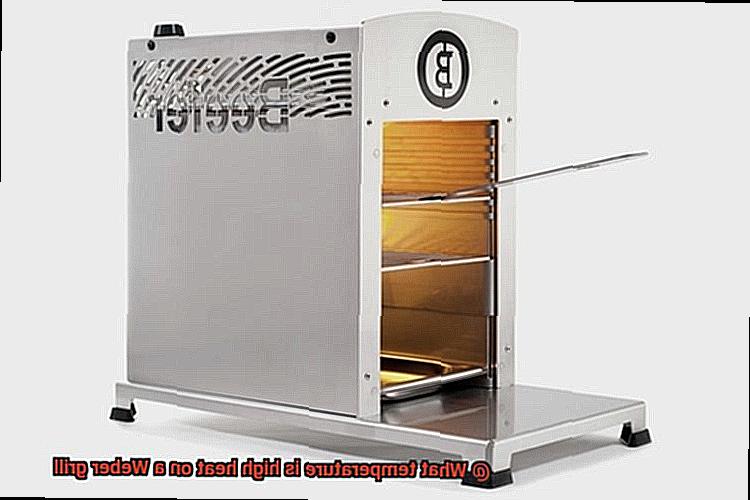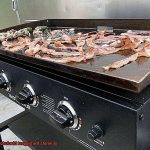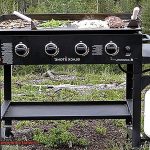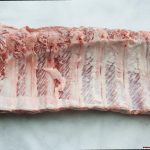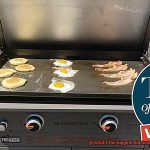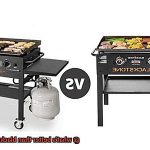Grilling isn’t just a method of cooking, it’s an art that requires precision, timing, and a love for flavor. Whether you’re a seasoned pro or a newbie to the grilling game, having the right tools and techniques is important – but nothing beats getting the heat just right. And when it comes to achieving mouth-watering perfection, high heat on your Weber grill is key.
But what exactly does “high heat” mean on a Weber grill? It’s not as simple as setting the dial to a certain temperature. The answer depends on several factors: the type of grill you have, what kind of fuel you’re using, and even the food you’re cooking. To get that perfect char and tender texture, you need to know how to control the heat and create an ideal environment for your meal.
In this post, we’ll dive into everything you need to know about high heat on your Weber grill. We’ll explore different types of grills and fuel sources, so whether you’ve got gas or charcoal at your disposal, you’ll be able to achieve that perfect sear. From juicy steaks to roasted veggies, we’ll give you tips and tricks for mastering high heat in any scenario.
So grab your apron and tongs – it’s time to become a high-heat grilling master with your trusty Weber.
Contents
What is High Heat on a Weber Grill?
Grilling is more than just cooking food; it’s an art that requires the perfect temperature to create a masterpiece. When grilling on a Weber grill, knowing what high heat is and how to achieve it is essential for cooking delicious, juicy meals.
High heat on a Weber grill refers to a temperature range of 400-450°F (204-232°C). However, this temperature range may vary depending on the model of your grill and the type of food you’re cooking. For instance, if you’re grilling steaks or burgers, you may want to aim for the higher end of the temperature range for a perfect sear. But if you’re grilling delicate fish or vegetables, you may want to opt for the lower end of the scale to avoid burning.
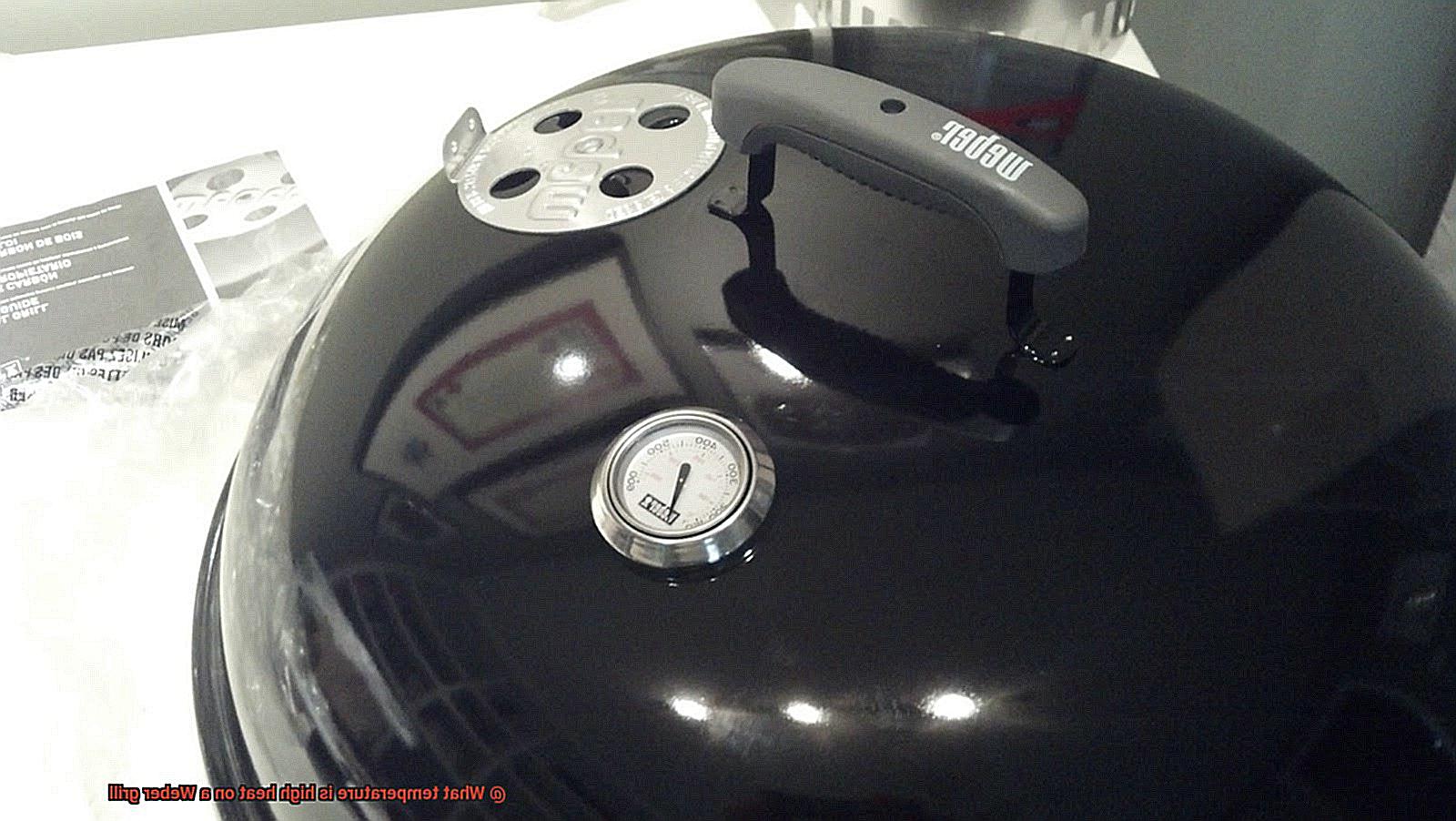
Preheating your Weber grill correctly is crucial to achieving high heat. Preheating helps prevent food from sticking to the grates and ensures even cooking. To preheat your Weber grill, simply turn on all burners and close the lid for about 10-15 minutes. This allows the grill to reach its maximum temperature and ensures that you start with a hot surface.
Using a thermometer can also help you achieve high heat on your Weber grill. A thermometer provides an accurate reading of the internal temperature of your grill, allowing you to adjust the heat accordingly. This is particularly important when cooking larger cuts of meat or dishes requiring precise temperatures.
It’s worth noting that different foods require different cooking temperatures. Steaks and burgers require high heat for a quick sear, while chicken and fish may require lower temperatures for longer cooking times. By understanding what temperature is considered high heat on your Weber grill and adjusting accordingly, you can create perfectly grilled dishes every time.
Types of Fuel Used in Weber Grills
Weber grills are the gold standard for outdoor cooking. However, choosing the right fuel source for your Weber grill can be a daunting task. That’s why we’ve put together this guide to help you understand the different types of fuel used in Weber grills and their unique benefits.
Propane gas is a popular fuel choice for Weber grills because it is clean-burning and efficient. With propane, you can easily regulate the temperature and heat up your grill quickly. This makes it perfect for those times when you’re in a hurry or have unexpected guests. Propane tanks are also easy to replace, and you can find them at most hardware or home improvement stores. However, some grill enthusiasts argue that propane doesn’t provide the same smoky flavor as charcoal.
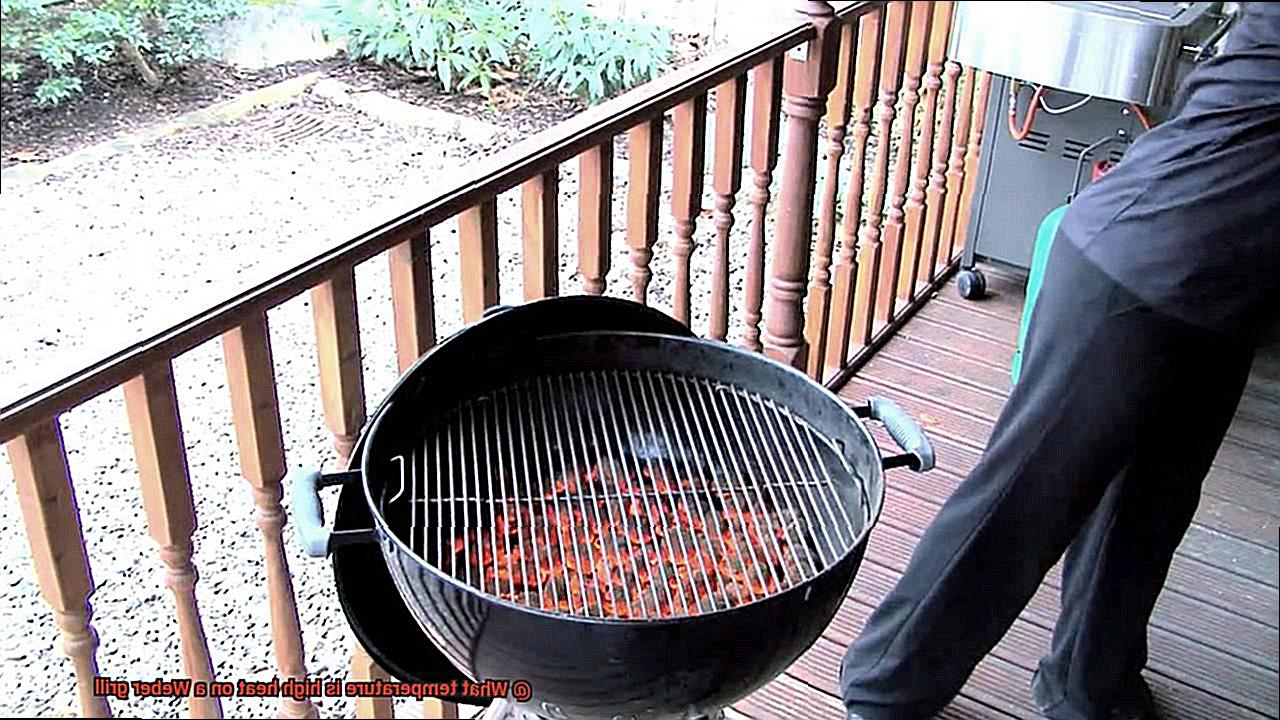
Speaking of charcoal, it’s a classic fuel option for Weber grills that provides a distinct smoky flavor to grilled foods. Charcoal is perfect for those who enjoy experimenting with indirect grilling and smoking techniques. It’s also ideal for those who want to impart a smoky flavor to their food without having to add wood chips. Just be sure to wait until the coals are fully lit before starting to grill. Charcoal can reach temperatures of up to 700 degrees Fahrenheit, making it perfect for searing steaks or cooking pizzas.
Natural gas is another clean-burning option for Weber grills that is convenient for those who already have a natural gas line installed. This makes it perfect for those who grill frequently or have large families. Natural gas grills require a dedicated gas line and cannot be used with propane tanks. However, once you have the gas line installed, you’ll never have to worry about running out of fuel again.
If you’re looking for something unique, wood pellets are another fuel option for Weber grills that provide a one-of-a-kind smoky flavor to grilled foods. Wood pellet grills use an electric auger system to feed wood pellets into the grill’s firebox, allowing for precise temperature control. This makes it perfect for those who want to smoke meat or fish. However, wood pellet grills can be more expensive than other fuel options and require access to electricity.
Preheating a Weber Grill for High Heat
Get ready for a sizzling BBQ experience with perfectly cooked food every time. Preheating your Weber grill for high heat is absolutely crucial when it comes to achieving those beautiful grill marks and ensuring your food is cooked to perfection. Let’s delve into the specifics of how to preheat your Weber grill for high heat.
First things first, remove the cooking grates and place a new drip pan underneath. Then, turn on the gas and set the burners to high heat. Close the lid and let the grill preheat for about 10-15 minutes. This allows enough time for the grates to heat up properly so that they can sear and cook your food to perfection.
If you are using a charcoal grill, add enough charcoal to create a two-zone fire. Once the coals are lit, close the lid and let them heat up for about 10-15 minutes until they are ashed over and glowing red. Remember, the preheating time may vary depending on your Weber grill’s size and model, so always refer to your owner’s manual for specific instructions.
It is important to note that preheating time may vary depending on the size and model of your Weber grill. Therefore, it is always best to refer to your owner’s manual for specific instructions on preheating your grill.
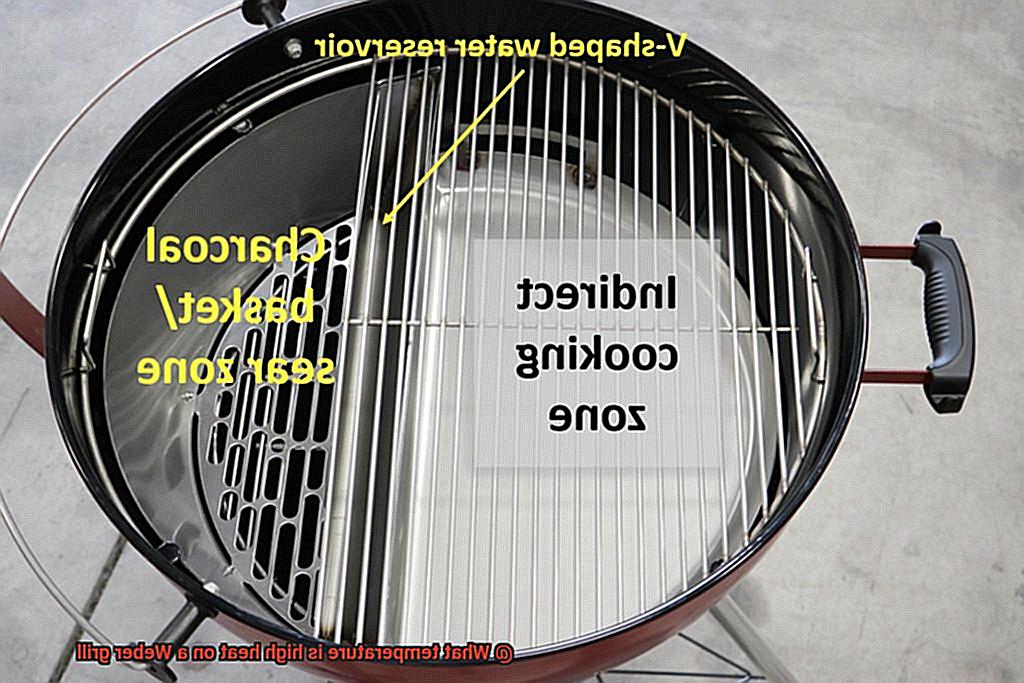
In addition to preheating, don’t forget to clean your grill grates before cooking. Use a wire brush or grill scraper to remove any debris or residue from previous cooking sessions. This ensures that your food doesn’t stick to the grates and cooks evenly.
Now that you have properly preheated your Weber grill, it’s time to get cooking. Whether you’re grilling up some juicy steaks or veggies, make sure to keep an eye on your food and adjust the heat as needed. With a little practice and patience, you’ll become a grill master in no time.
Different Foods Require Different Temperatures
Grilling on a Weber grill is a fantastic way to add a burst of flavor and excitement to any meal. However, not all foods require the same temperature when being grilled. Different foods require different temperatures to ensure they are cooked safely and evenly. Knowing the ideal temperature range for the food you are cooking is crucial.
When it comes to grilling burgers or steaks on a Weber grill, high heat is key. This temperature range, which typically ranges from 450-500°F, allows for a quick sear on the outside while keeping the inside juicy and tender. Achieving the perfect sear while preventing overcooking is essential for mouth-watering burgers and steaks. Checking the internal temperature of the meat using a meat thermometer will guarantee that it has reached a safe temperature for consumption.
On the other hand, vegetables and delicate fish require lower heat to prevent burning. A medium heat range of 350-400°F is ideal for grilling these types of foods. This allows for even cooking without scorching or overcooking. Grilling your vegetables and fish at this temperature range results in perfectly cooked, tender, and scrumptious dishes.
But what about larger cuts of meat or poultry? That’s where indirect heat comes into play. Indirect heat involves placing the food away from the direct flame and cooking it with the lid closed. This technique allows for slower cooking and even heat distribution, resulting in tender and flavorful meat. It is a fantastic method for cooking larger cuts of meat or poultry that require longer cook times.
Tips to Achieve Optimal Temperature on a Weber Grill
Achieving optimal temperature on your Weber grill is the key to cooking up mouth-watering steaks or perfectly charred veggies. Here are five tips to help you achieve the perfect temperature on your Weber grill:
Preheat the Grill
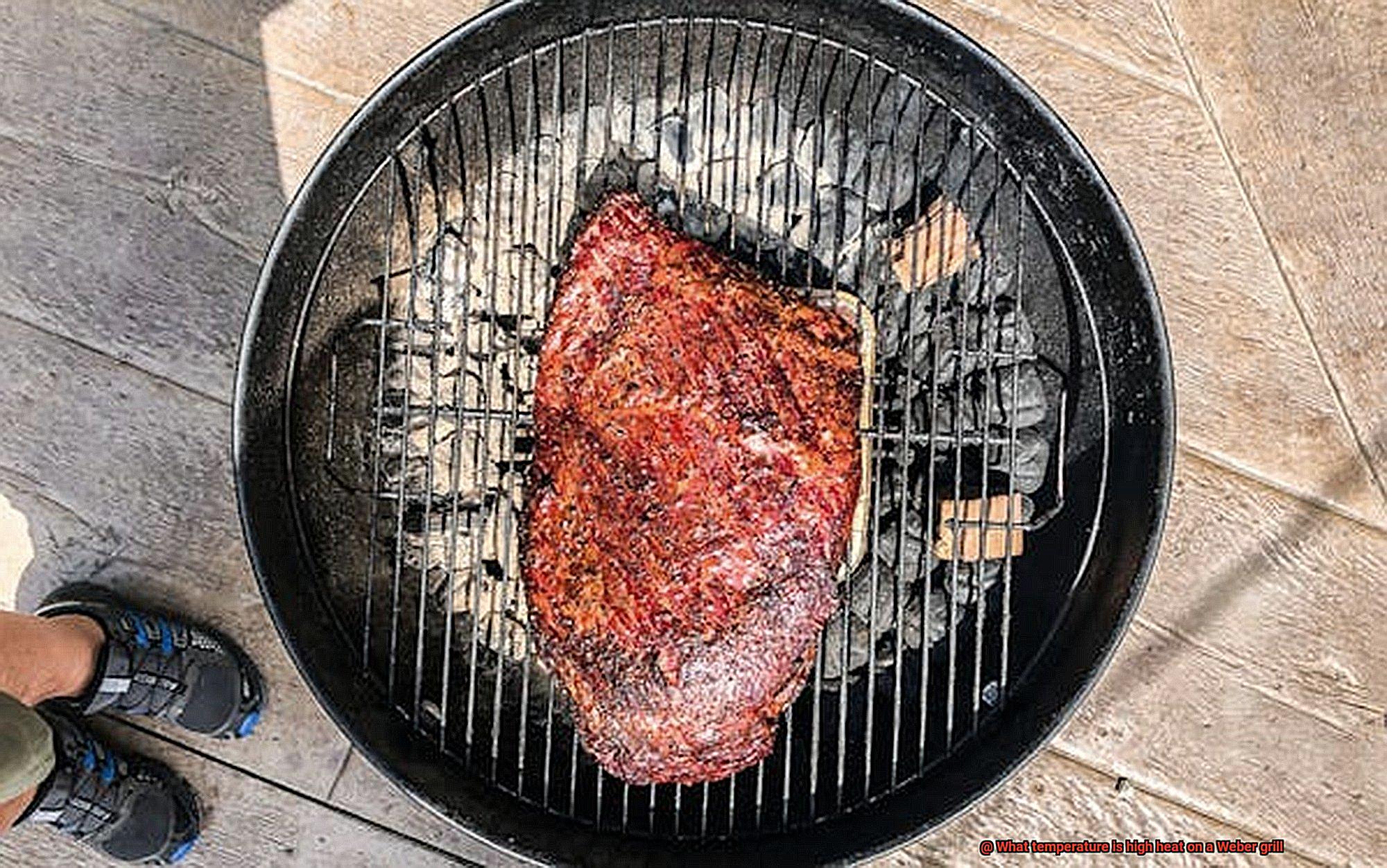
One of the most important things you can do to achieve optimal temperature on your Weber grill is to preheat it for at least 10-15 minutes. This ensures that the grates are hot enough to sear and cook your food properly. Preheating also prevents sticking and uneven cooking.
Use the Right Fuel
Whether you’re using charcoal or gas, using the right amount is crucial for maintaining the desired temperature on your grill. Too much charcoal can create excessive heat, while too little can result in a cooler grill. Consult your owner’s manual for specific instructions on how much fuel to use.
Check the Temperature
Checking the temperature of your grill is essential for achieving optimal cooking results. You can use an instant-read thermometer or the hand test method to check if your grill has reached high heat, which is typically around 450-550°F (232-288°C). This will help prevent undercooking or overcooking your food.
Proper Ventilation
Adequate ventilation is essential for maintaining high heat on your Weber grill. Open the vents on the lid and bottom of the grill to allow for proper air flow, which prevents flare-ups and helps maintain consistent heat.
Adjust for Different Foods
Different foods require different cooking temperatures, so adjust the heat accordingly. Thicker cuts of meat may require lower heat and longer cooking times, while foods that cook quickly like burgers or vegetables may require higher heat.
How to Adjust the Temperature on a Weber Grill
Grilling is a timeless activity that brings families and friends together. However, to achieve mouth-watering results, one must know how to adjust the temperature on their Weber grill. In this guide, we’ll explore five sub-sections that will help you master the art of temperature control on your Weber grill.
Clean Your Grill
The first step in temperature control is to ensure that your grill is clean and free of debris. This is important because any blockages can hinder the even distribution of heat. Use a grill brush to scrub off any remaining bits of food or ash from previous grilling sessions.
Adjust the Vents
The vents on your Weber grill are designed to control the airflow in and out of the grill, which ultimately affects the temperature. To increase the temperature, open the vents to allow more air into the grill. Conversely, if you want to lower the temperature, close the vents to restrict airflow. Remember to adjust both the bottom and top vents accordingly for optimal results.
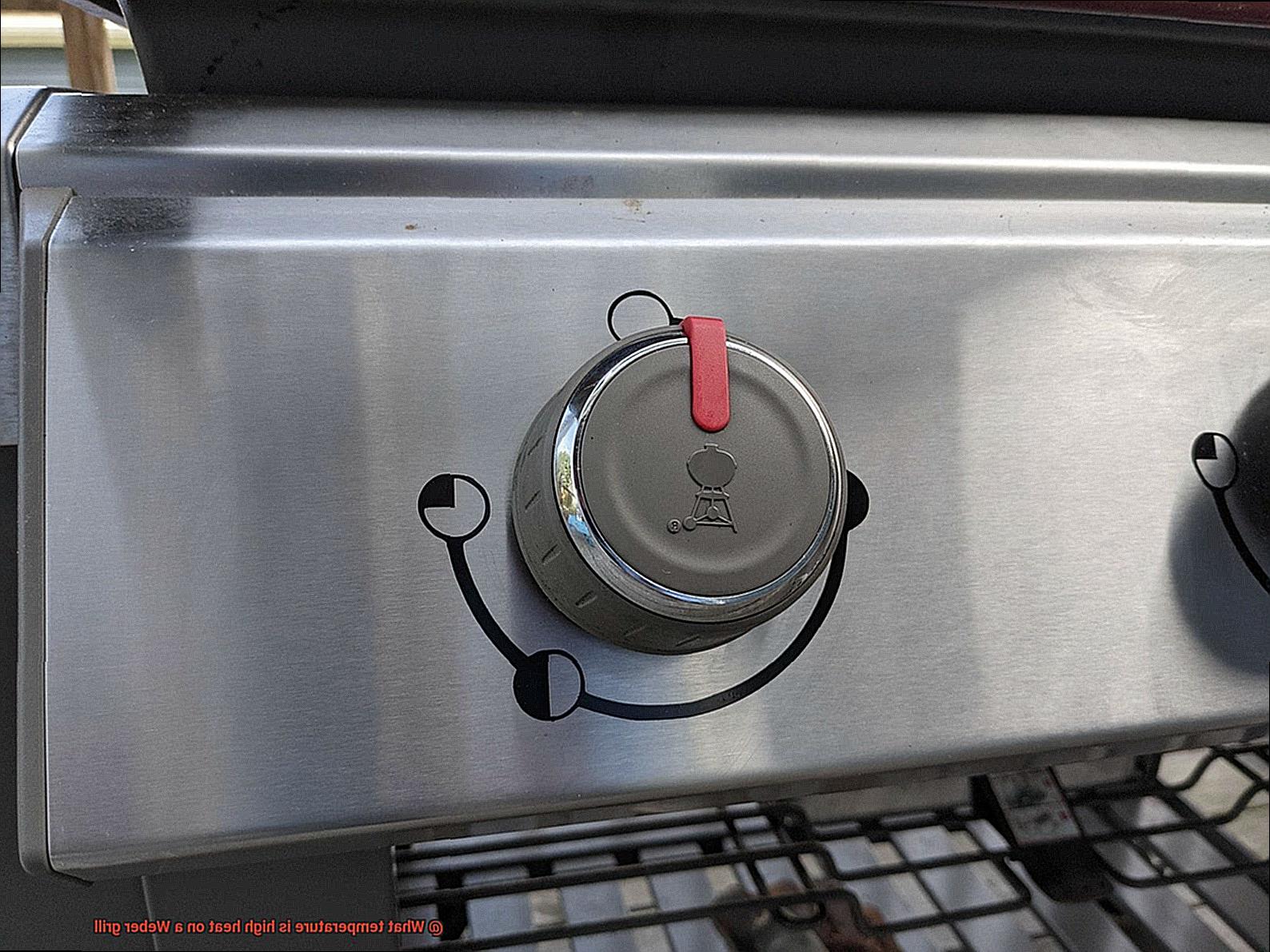
Use The Burners
If you have a gas Weber grill, adjusting the burners can help regulate the temperature. Each burner controls an area of the grill’s cooking surface, so it is essential to turn up or down each burner depending on your desired heat level. For charcoal grills, adjust coal placement to create different heat zones. Moving coals closer together raises the temperature while spreading them out lowers it.
Use a Thermometer
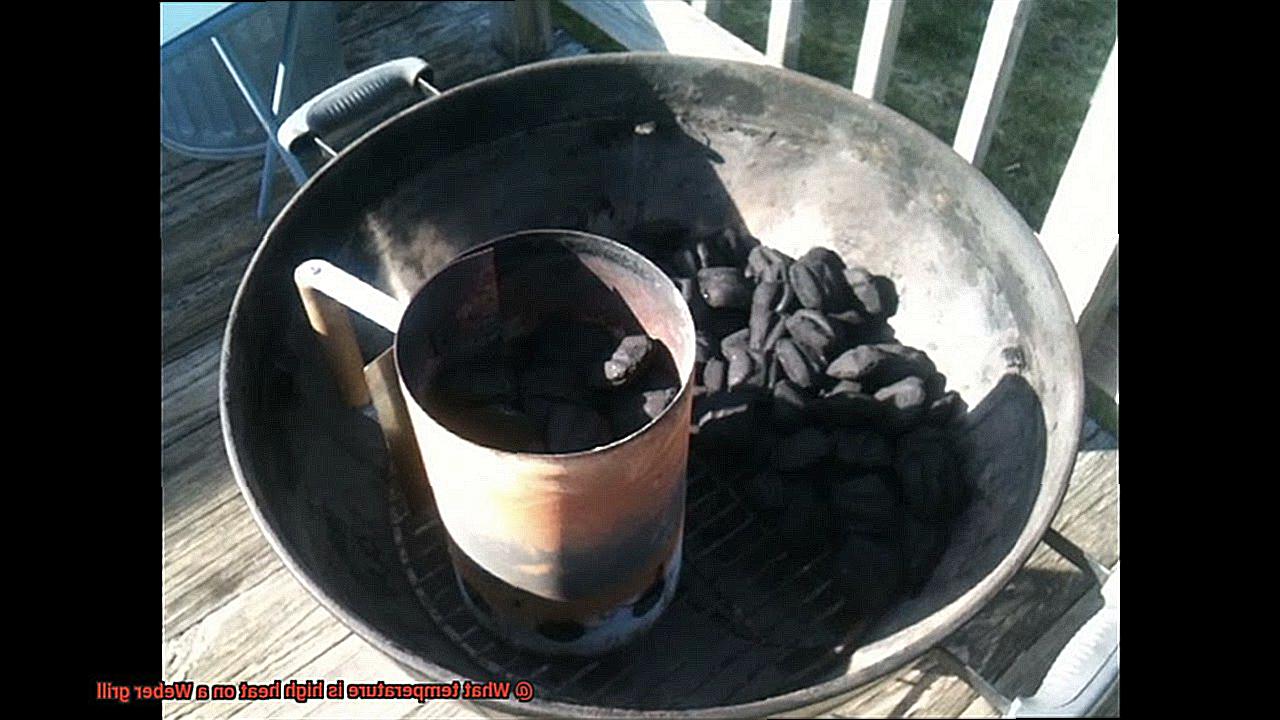
Using a thermometer can help you monitor your grill’s temperature accurately and consistently. This will help you determine when it reaches high heat or other desired temperatures for different types of cooking styles like searing or slow-cooking. Make sure to place the thermometer in a central location for accurate readings.
Be Patient
Finally, adjusting the temperature on a Weber grill takes time and patience. It’s crucial not to expect immediate results after making adjustments. Allow your grill time to heat up or cool down before making further tweaks.
Safety Considerations When Using High Heat on a Weber Grill
Grilling with high heat on a Weber grill is an exciting and delicious way to cook food, but it’s important to prioritize safety above all else. As an expert on this topic, I’ve compiled some essential safety considerations that you should keep in mind when grilling with high heat.
Firstly, it’s crucial to ensure that your Weber grill is placed on a level and stable surface. A wobbly grill can easily tip over, causing hot coals or flames to spill out and potentially cause serious injury or damage. Take a moment before you start cooking to double-check that your grill is securely placed.
Secondly, never leave the grill unattended when using high heat. It only takes a moment for a flare-up or other issue to occur, and if you’re not there to quickly address it, the situation can quickly escalate. Always keep an eye on the grill and be ready to take action if needed.
When working with high heat on a Weber grill, it’s also important to use long-handled grilling tools and wear heat-resistant gloves. This will protect your hands and arms from burns caused by the hot surfaces of the grill and the food being cooked. Don’t let preventable injuries ruin your fun time.
Finally, it’s essential to have a fire extinguisher or other means of extinguishing a fire readily available when using high heat on a Weber grill. While taking all necessary precautions can greatly reduce the risk of a fire starting, accidents can still happen. Having the ability to quickly put out a fire can make all the difference between a minor incident and a major disaster.
Common Mistakes When Using High Heat on a Weber Grill
Grilling is the ultimate summertime activity, and using a Weber grill to cook up your favorite meats and veggies is a surefire way to impress your guests. But when it comes to using high heat on your Weber grill, there are some common mistakes you’ll want to avoid to ensure your food is cooked to perfection every time.
The first mistake is failing to preheat your grill properly. Without proper preheating, you run the risk of uneven cooking, leaving your food undercooked or overcooked. To avoid this, preheat your grill for 10-15 minutes with the lid closed before adding your food. This will help ensure that your grill is hot enough to cook your food evenly.
Another common mistake is overcrowding the grill. It can be tempting to cook everything at once, but overcrowding can cause the temperature to drop and lead to uneven cooking. Give each piece of food enough space for air to circulate and ensure even cooking.
Using the wrong type of fuel is also a frequent mistake. Charcoal briquettes are perfect for low and slow cooking, while lump charcoal is better suited for high heat grilling. Using the wrong type of fuel can lead to inconsistent temperatures and affect the flavor of your food.
Lastly, not cleaning the grill grates before cooking is a mistake that can lead to sticking and uneven cooking. Make sure to brush the grates with a wire brush before and after cooking to remove any debris or residue.
jdVThb3Ogv4″ >
Conclusion
Grilling is an art that demands precision, timing, and a passion for flavor. To achieve mouth-watering perfection, high heat on your Weber grill is key. But don’t be fooled into thinking that setting the dial to a certain temperature will do the trick. The answer hinges on several factors, including your grill type, fuel choice, and even the food you’re cooking.
To become a high-heat grilling master with your trusty Weber, it’s essential to understand what high heat means for your grill and how to attain it. Correctly preheating your Weber grill is crucial to achieving high heat. You can also use a thermometer to help you hit those high temperatures. Remember that different foods require different cooking temperatures, so adjusting the heat accordingly is vital.
When using high heat on a Weber grill, safety should be paramount above all else. Common mistakes include neglecting to preheat properly, overcrowding the grill, using the wrong fuel type, and failing to clean the grates before cooking.

